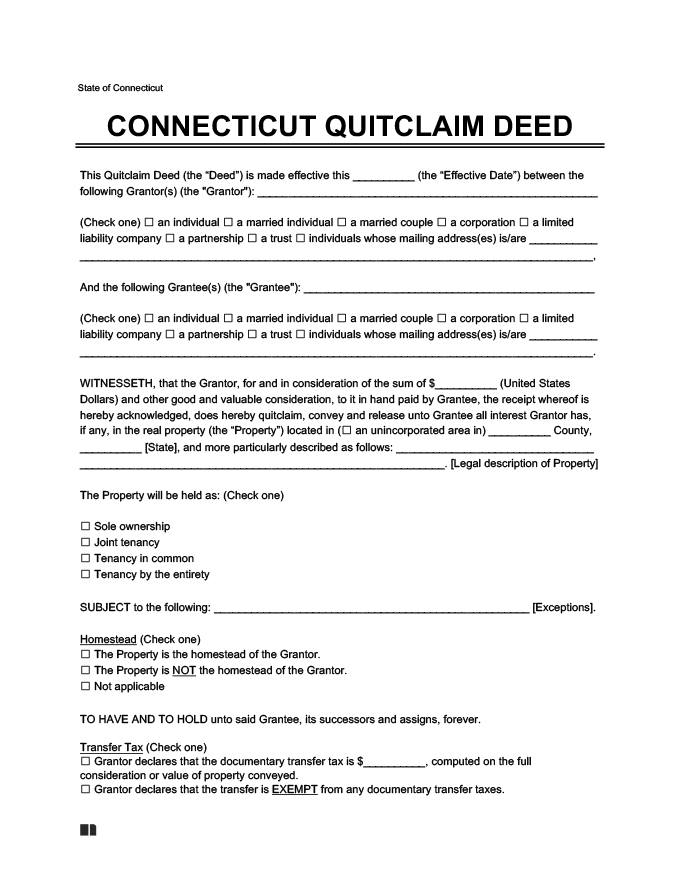If you need to learn how to file a quitclaim deed in Connecticut, follow the state-specific steps below to write and submit your document properly:
- Step 1: Fill In the Preparer's Details
- Step 2: Enter Grantor's Details
- Step 3: Write Grantee's Information
- Step 4: Add 'Return to' Information
- Step 5: Fill In the Property's County
- Step 6: Note the Payment Amount or "Consideration"
- Step 7: Note the Property's Legal Description
- Step 8: Sign and Get Quitclaim Deed Notarized
- Step 9: File Your Quitclaim Deed
Step 1: Fill In the Preparer’s Details
Add information about the person who is preparing the form. This will include their mailing address and name.
If you are preparing the form alone as the person giving the property (or grantor), your information should go here. You should also note yourself as the grantor.
Step 2: Enter Grantor’s Details
If there is a section for the grantor’s information at the top of the document, there are likely clear blanks to name the grantor, identify their relationship or professional status, and add their address.
If it’s in the body of the document, after the words “in hand paid to,” write the name of the grantor followed by the word “grantor.” Next, record the grantor’s address. This requires the county where the grantor lives.
Step 3: Write Grantee’s Information
Again, either toward the top of the document or within its paragraphed content, record the grantee’s name, ensuring the designation of “grantee” is used. Also, add their address, including the county.
After the words “situated in” or “located in,” fill in the county where the property sits.
Step 4: Add ‘Return to’ Information
Under the preparer’s information, put the name and address of the person who wants to receive the deed after it is properly filed.
This is often the person receiving the property (or grantee).
Step 5: Fill In the Property’s County
Find the words “State of Connecticut,” “County,” or similar in your template. In the blank, write the county where the property is located.
Step 6: Note the Payment Amount or “Consideration”
Record the dollar amount paid for the property in words. After a dollar sign, write it in numbers too.
Step 7: Note the Property’s Legal Description
Usually included right after the blank for the property’s county, the words “Connecticut to-wit” or “more particularly described as” often precede the property’s legal description.
While there are no state-specific requirements about which details to include here, more than just the mailing address is necessary. Check with the appropriate town clerk or refer to previous deeds of the property to find a legally sound description.
Step 8: Sign and Get Quitclaim Deed Notarized
Arrange for two witnesses and a notary public to be present for the grantor to sign the document. The notary may count as one of the two witnesses if previously arranged. The document must be notarized, and the witnesses must sign and print their names.
Step 9: File Your Quitclaim Deed
Visit the town clerk in the city or the town where the property is located to file the form. Bring a payment method with you to cover any necessary taxes or fees.
